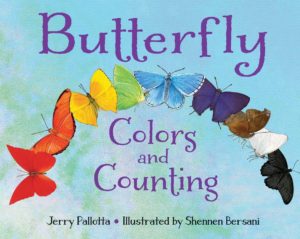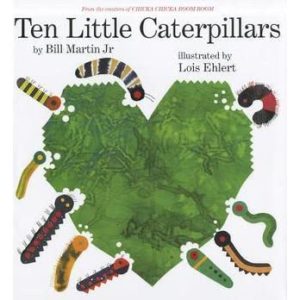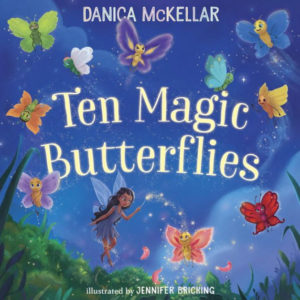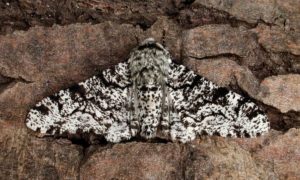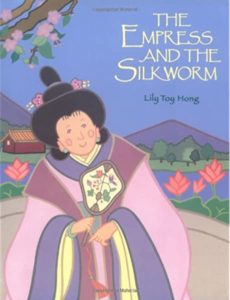
|
Lily Toy Hong’s The Empress and the Silkworm (Albert Whitman and Company, 1995) is a tale of the origin of silk, beginning when a cocoon falls into the Empress Si Ling-Chi’s teacup and begins to unwind. The empress envisions her husband, Huang-Ti, the Yellow Emperor, clothed in a shimmering robe woven from this “heavenly thread.” She weaves him just such a robe; silk-making comes to China; and Si Ling-Chi becomes known as the Lady of the Silkworm. The book is, sadly, out of print, but is available through libraries. For ages 5-9. |
|
For an early-elementary-level lesson plan to accompany The Empress and the Silkworm, see Story of Silk. Accompanying projects include putting (printable) Silkworm Sequencing Cards in order and unraveling a silkworm cocoon. |
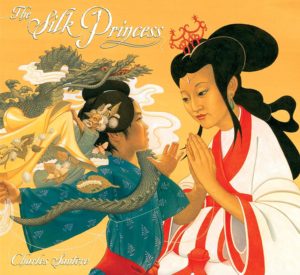
|
Charles Santore’s The Silk Princess is the fairy-tale like story of the little princess Hsi-Ling Chi who – when a silkworm cocoon falls into her mother’s tea and starts to unravel – decides to find out how long the thread is. Off she goes on a long and magical journey to the Holy Mountains that results in an encounter with a giant spider and a dragon – and ultimately a triumphant return, bringing with her the wonderful secret of silk-making. For ages 6-9. |
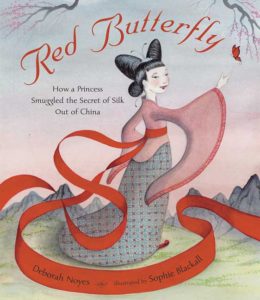
|
In Deborah Noyes’s Red Butterfly: How a Princess Smuggled the Secret of Silk Out of China (Candlewick, 2007), a young Chinese princess is sent by her father to marry the faraway king of Khotan. Sad to leave her home, the princess lists the many things she will miss – pink peach petals, red-crowned cranes, sour plums – and the beautiful silk made by Chinese silkworms. Though it is forbidden to reveal the secret of silk-making outside China, the princess nonetheless smuggles out silkworm cocoons and mulberry seeds in her hair, so that she will always have with her a part of her beloved home. For ages 6-10. |
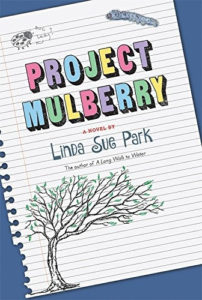
|
In Linda Sue Park’s Project Mulberry (Yearling, 2007), Julia, a daughter of Korean immigrants, and her friend Patrick team up to do an animal husbandry project on silkworms for the state fair. Initially, Julia isn’t enthusiastic (it’s too Korean), but soon both kids become wrapped up in the project – and along the way learn a great deal, not only about environmentalism and silkworm biology, but about friendship and tolerance. For ages 9 and up. |
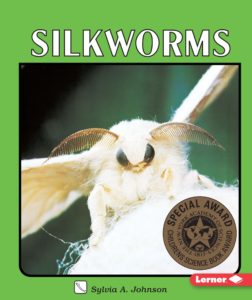
|
Sylvia A. Johnson’s Silkworms (First Avenue Editions, 1989), illustrated with great color photographs, is a straightforward account of domesticated silkworms and silk production for ages 9 and up. |
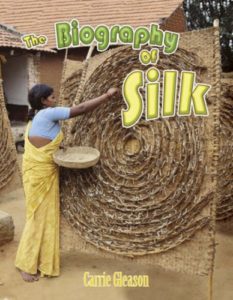
|
Carrie Gleason’s 32-page The Biography of Silk (Crabtree Publishing, 2006), illustrated with color photographs, covers all the basics, including silkworms and silk production, ancient China and the Silk Road, the silk industry in America, and the uses of silk. For ages 9-12. |
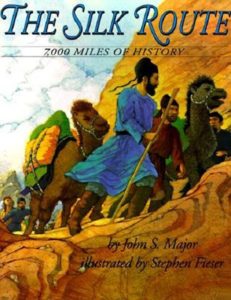
|
John S. Major’s The Silk Route: 7000 Miles of History (HarperCollins, 1996), in 32 lushly illustrated pages, traces the early silk trade from the mulberry groves of China to Byzantium (now Constantinople) via a journey on the famous Silk Road in 700 AD. For ages 9 and up. |
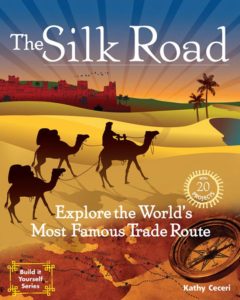
|
Kathryn Ceceri’s The Silk Road: 20 Projects to Explore the World’s Most Famous Trade Route (Nomad Press, 2011) covers the history and geography of the Silk Road, the peoples who lived along its path, the role it played in the spread of technology, and the Silk Road today in 128 nicely designed pages featuring “Words to Know” and “Fascinating Facts” boxes and capsule biographies of famous Silk Road travelers. Sample projects include making an abacus and a sand design bottle, and building a model yurt. For ages 9-12. |
|
Make your own silk? Silkworms has general information, sources for eggs and equipment, instructions for raising silkworms at home or in a classroom, and much more. |
|
For more information on silkworms or to order eggs or worms, see the Silkworm Shop. |
|
Silk and…vaccines? Silk protein may help deliver vaccines and antibiotics to developing countries. Find out how from Scientific American.
|
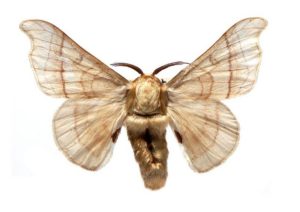
|
Pheromones were first discovered in silk moths. The first, named bombykol, was isolated from the silk moth Bombyx mori. Learn all about it at Molecule of the Month: Bombykol or Bombykol: Sex Pheromone of the Silk Moth. |
